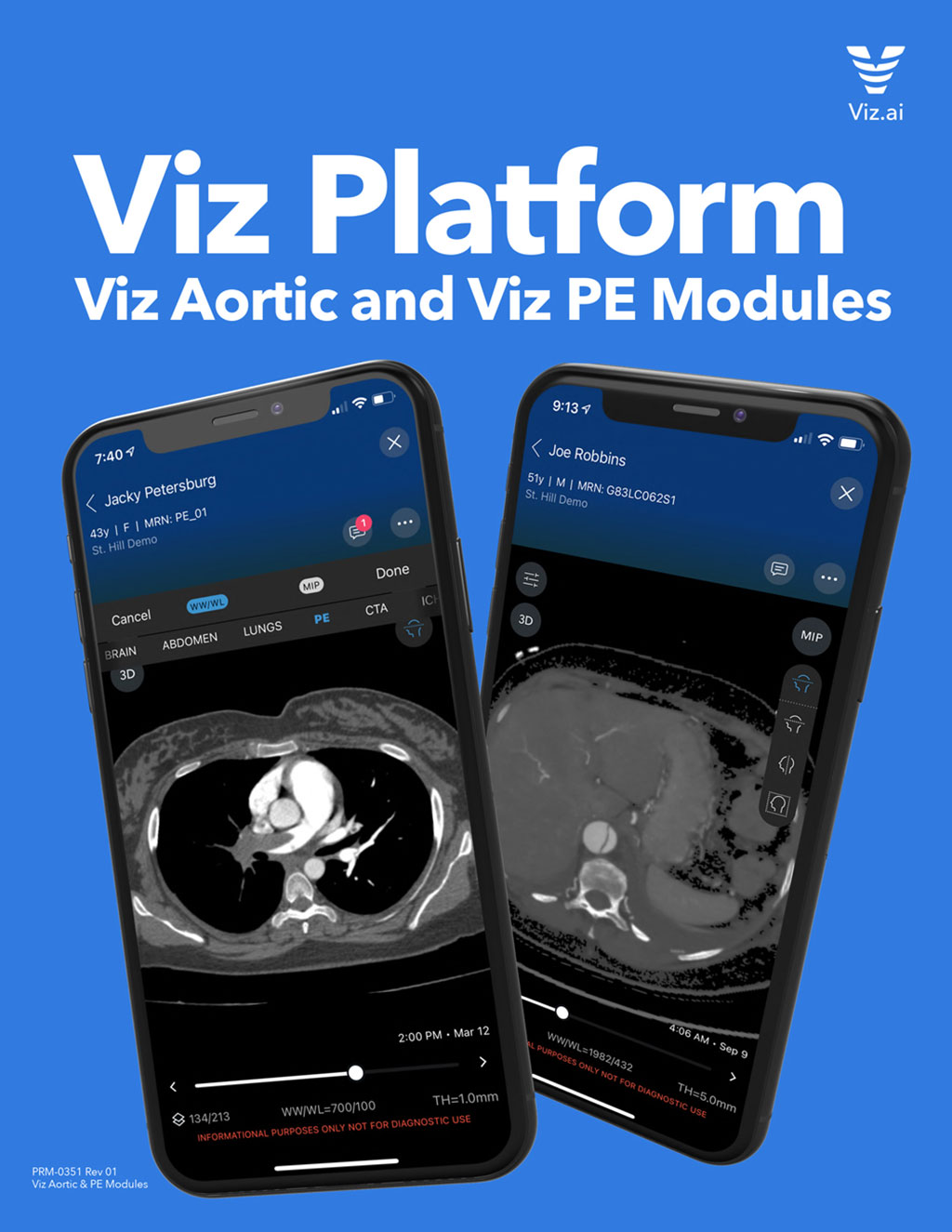CT Scan Clot Detection System with Automated Algorithm Improves PE Diagnosis
Posted on 05 Sep 2022
Detecting and coordinating the care of pulmonary embolism (PE) disease is challenging. This is especially true across large catchment areas with limited resources that rely on manual triage. Diagnosis and care coordination for patients suffering from PE requires fast multi-disciplinary communication for risk stratification and decision making. Now, an automated RV/LV ratio algorithm, which is seamlessly integrated into a deep learning solution to identify suspected central and segmental pulmonary emboli, flags key patient risk indicator of PE severity.
Viz.ai, Inc. (San Francisco, CA, USA) has received U.S. Food and Drug Administration (FDA) 510(k) clearance for an automated RV/LV ratio algorithm, a seamless new component of its Viz PE Solution. Launched in November 2021, Viz PE uses deep learning to identify suspected central and segmental pulmonary emboli in under two minutes. Delivered quickly to the entire care team on the Viz PE Solution, the information further enables care teams to ensure that the right clinical decision is made at the right time – no matter where the patient resides in the healthcare system – to ensure quick and appropriate care.

With the integration of the RV/LV algorithm, the Viz PE Solution now includes an automated assessment of potential right ventricle (RV) dilation. The algorithm is designed to quickly and accurately measure the diameter of the ventricles of the heart to provide the ratio of the maximum RV diameter versus that of the left ventricle (LV). Automating this key patient risk indicator will enable care teams to respond more quickly than before. The RV/LV ratio algorithm is another of the fast-growing number of FDA cleared AI algorithms on the enterprise-wide Viz Platform, which is clinically validated and proven to save time and improve patient outcomes and access to care across more than 1,200 health systems in the US and EMEA.
“The Viz.ai automated CT scan clot detection system improves diagnostic acumen and expedites care for patients with acute pulmonary embolism,” said Dr. Kenneth Rosenfield, Interventional Cardiologist, Section Head of Vascular Medicine and Intervention at Massachusetts General Hospital and Co-Founder of the PERT Consortium “But the true killer in patients with PE is failure of the right heart. With this clearance, the Viz PE Solution now includes both detection of clot in the lungs and degree of strain on the right heart. This will enable clinicians to quickly triage patients and treat them appropriately, by providing a powerful tool for early detection and risk stratification. This expedited critical decision-making will undoubtedly save lives.”
“With AI-powered enhanced image interpretation that dramatically improves the quality and speed of mobile image viewing – and caregiver communication – Viz PE already helps identify suspected pulmonary embolisms in under two minutes,” said Jayme Strauss, chief clinical officer, Viz.ai. “The addition of the RV/LV algorithm is expected to further aid care teams to quickly make the right clinical decision for their patients, improving outcomes and saving lives.”
Related Links:
Viz.ai, Inc.






 Guided Devices.jpg)







